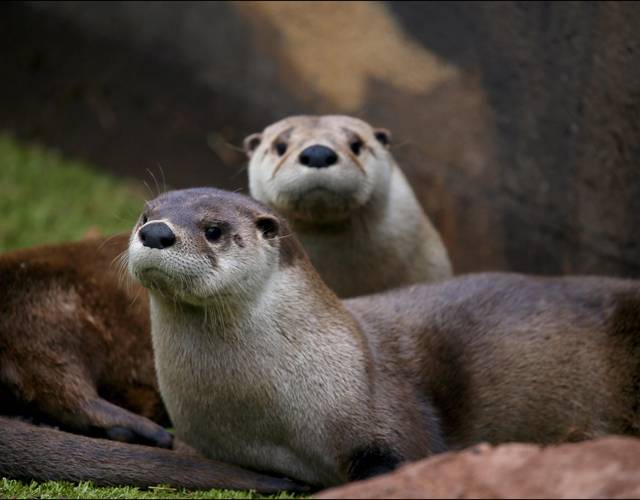Otters on the Maumee
By Karen Menard
Why did both otters cross the river? To get to the “otter” side--ending up near Providence Metropark!
Many of us probably don’t recall ever seeing an otter in the wild. However, in recent years, river otters—the largest members of the weasel family-- have become more common in Ohio and are now making appearances in our neck of the river, like the pair in the Providence Metropark video (posted below).
Otters prefer tributaries of major, unpolluted drainages with minimal human disturbance and build their dens in riverbanks or abandoned beaver lodges. Some of the habitat on the Maumee River islands, not too far away from Providence, may be good locations for them.

Native to Ohio and once distributed throughout much of North America, otters were state extirpated by the early 1900’s due to habitat loss, pollution, and reduction in food supply. However, in 1986, the Ohio Division of Wildlife launched a reintroduction program and otter presence has now been confirmed in 83 of 88 counties with an estimate of over 6,500 individuals. Population growth has continued to offer viewing opportunities in new areas; however, being mostly nocturnal, these animals are best seen at night, early morning, or dusk.
Activities like swimming and sliding suit the otter very well. Webbed feet, a long, tapered body with short, sleek dense fur and a strong tail are adaptations that aid in their success in the wild. Slide sites down riverbanks or in the snow offer good evidence of otter activity. Look for their webbed tracks in the mud or snow around rivers, wetlands or over bridges near waterways.
Otters play an important role as a predator in a river ecosystem, consuming fish, frogs, crayfish, aquatic insects, small birds/mammals and eggs. Sharp teeth adapted for grasping and crushing make for an easy meal of prey in a wetland environment.
Overall, river otters have beneficial roles in river or wetland ecosystems as they help to control prey populations, keeping them in check. Keep an eye out for these beautiful animals along the Maumee River this winter and spring.
Did you know?
Otters can hold their breath for up to eight minutes under water and can dive to a depth of 60 feet.
--
Video by Claire Wallace, outdoor skills programmer
Stock photo